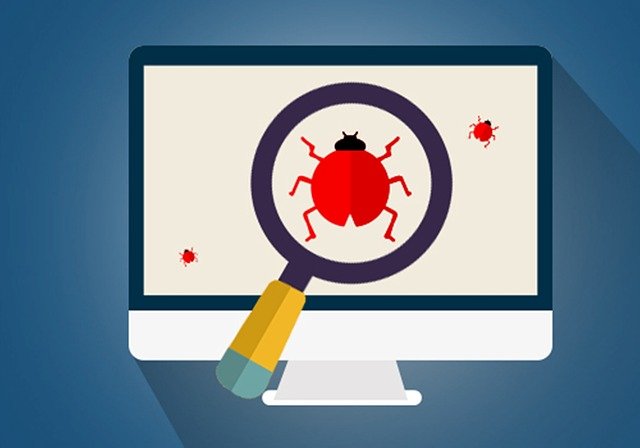Security is of major importance for just about every business under the sun. While we often think of large companies falling victim to hacks and data breaches, small businesses are frequently targeted as well. Also, businesses in nearly every industry have fallen victim at one time or another, so you need to be careful.
Whether they use a virtual dedicated server to keep their website functional and protected, or use access control to protect customer data, security is always on the mind. This is especially true for companies engaging in software development.

The software development market is competitive, and constantly dealing with errors, problems or other security issues within your software that can hurt your ability to deploy software as quickly as your competition. Worse yet, it could lead to data breaches or leaks that could cripple your operations and ruin your reputation among the public.
While many software development teams will only test at certain points in the software development life cycle, that doesn’t always cut it. Thankfully, there are a few ways to successfully integrate testing and analysis into different points of the process.
With that in mind, this article is going to go over a few tips to ensure your software development life cycle is secure.
It Begins At the Start of the Cycle
If you truly want security to be a major part of the development life cycle of your software, it needs to be a part of your plans right from the beginning. When many companies first have the idea for a piece of software, they tend to focus on creating the functional requirements. This goes over what they want the software to do, and how it can solve the problem of the end user, no matter who it is.
But in addition to worrying about and planning the functionality of your software, you also need to integrate a focus on security into the plans right from the beginning. Writing security requirements along with these functional ones can ensure security is never an afterthought during the planning, development, deployment or maintenance stages. Without these plans written out and set in stone, things have the potential to get missed or forgotten about.
If you wait too long before thinking about security, it can be more challenging to squeeze it in or there may have already been several security issues that dramatically slow down the development. When it comes to testing, always make sure to keep things measurable, so you can compare over time and ensure improvements can be made and tracked.
Utilize Threat Modeling
The idea of testing and thinking of security shouldn’t be reserved for the testing and deployment stages of the software development life cycle. Right from the start, your team should be thinking about how you can design secure software. A great way to do that is by utilizing a technique called threat modeling.
Threat modeling is largely based on identifying potential vulnerabilities that could occur down the line, and creating or discovering techniques to protect against them. These threats will often be organized by how serious and/or likely they are, so you know which ones your team needs to ensure don’t happen.
The more you plan for and model these threats, the better equipped you will be to deal with them if they actually occur. Without modeling these threats and looking at them in detail, your software or company could be vulnerable in ways you didn’t even see coming.
It is generally done early in the life cycle of software, rather than later. This can ensure your team is prepared ahead of time, instead of being forced to be reactive once an issue has been identified. In most cases, threat modeling is very structured, as well.
Regular Penetration Testing is Critical to Success
So we know that testing is perhaps the most important near the beginning and the end of the life cycle, but there are no reasons not to test throughout it as well. This can ensure everything is working as expected and the security is up to par. Perhaps the best way to ensure your software is secure throughout the different stages of development is by using penetration testing.
Interesting Read: What is Web Application Penetration Testing? All you need to know
This is essentially simulating an attack, as if it were from a hacker, data thief or other cyber criminal. These will help to reveal what would happen if an actual hacker attempted to access your software, without actually putting yourself in any real danger. It can help identify any weak points or security vulnerabilities in a controlled and safe manner. These can then be fixed up, thus increasing how secure your software is.
If you wait too long to run these kinds of tests, or don’t do them enough, you might be in for a rude awakening in terms of how much you need to change or fix before deployment. It is better to do smaller, more frequent, testing during the development phases than to do it all at the end.
Perform Security Audits
In addition to pen testing, regularly performing security audits to ensure everything matches up well with your criteria is always a good idea. This will look at how information is being handled, ensures people are using best practices and may even look at the configuration or environment of your system or software.
Not only are these done to ensure you are protected, but may also need to be done in order to remain compliant. The compliance requirements you have will different depending on the industry you are in and the type of software you produce. Not being compliant can come with some stiff penalties or fees, so always be sure you know the rules and abide by them.
Both these security audits and the aforementioned penetration tests play an important role in the overall level of security of your software. Without security audits, you may never be sure how well your software will stand up to the actual criteria you have set out for it. A secure software development life cycle will include several different kinds of tests to ensure things are on the right path, so don’t just focus on one.
Use Code Scanning Tools

The scanning and analysis of your code is also something that should be considered to ensure your software is as secure as possible. These analysis tools can sift through your source code and identify potential issues or security flaws. These tools scale very well, and can often work incredibly quickly to alert developers immediately of any issues.
While they may not catch everything, and some manual analysis will of course be required, they are a great and efficient way to see how secure your code is. Of course, to minimize the likelihood of errors occurring in the first place, it’s a good idea to ensure everyone is educated on secure coding practices. Your team should know the design patterns that should be avoided, and be aware of common vulnerabilities that may occur.
Interesting Read: Worried about Cyber Security-Build your Incident Response Plan
The better your team is at writing secure code, the less work the security tools will have to do and the quicker you can work your way through the cycle without security-related hiccups. Be sure to invest in the proper training for employees to ensure they can write code securely. It is a worthwhile investment and one that can save your business a lot of time and money.
Don’t Forget About Post-Release
Once a software or update is released, many companies may breathe a sigh of relief now that the work is done. But when it comes to security and testing, the work is just beginning. While some software has a flawless release and has no bugs or errors, this isn’t always the case. Many pieces of software can have vulnerabilities slip through the cracks, especially if the testing has been subpar.
These errors can be in the code itself, or even in the various other components of the app or software. They could also be discovered through ethical hacking or bug bounties. Your software needs to be maintained well after the fact near the tail-end of the life cycle, so it can continue delivering what users expect.
If issues are found post-release, your team needs to work quickly and effectively to deal with them. If they are left too long it could lead to a negative reaction from the public. Once a piece of software has been released, it is your job to continue ensuring that security is a priority and that you test frequently to ensure everything is as it should be.
In conclusion, we hope that this blog post has been able to help you successfully integrate security testing into the life cycle of your software development. It can take a bit of work, but is certainly worth it to ensure that your software is secure and does what it was built to do. For a structured approach, leverage our Software Testing and QA Services.





A pinch of probability is worth a pound of perhaps, good blog. Thanks
Nice information. Remote working has made cybersecurity a necessity
Informative and with the increasing cyber-attack it is the need of the hour
The article rightly encapsulates the importance of testing into software development life cycle (SDLC). As many errors and defects are inevitably introduced during SDLC, testing can detect and remove these defects.
Hi, Your content is so informative, and it’s my small participation.
Tips For Safe Web Browsing
1). Buy antivirus online & install
2). Use a firewall
3). Befriend strong passwords
4). Update your security software for internet security & computer safety.
5). Be cautious of clicking links in email or instant messages
6). In fact, be wary of clicking links, in any space
7). Bookmark important sites.
Stay secure with the updated version of antivirus software online from renowned brands like K7 antivirus software.